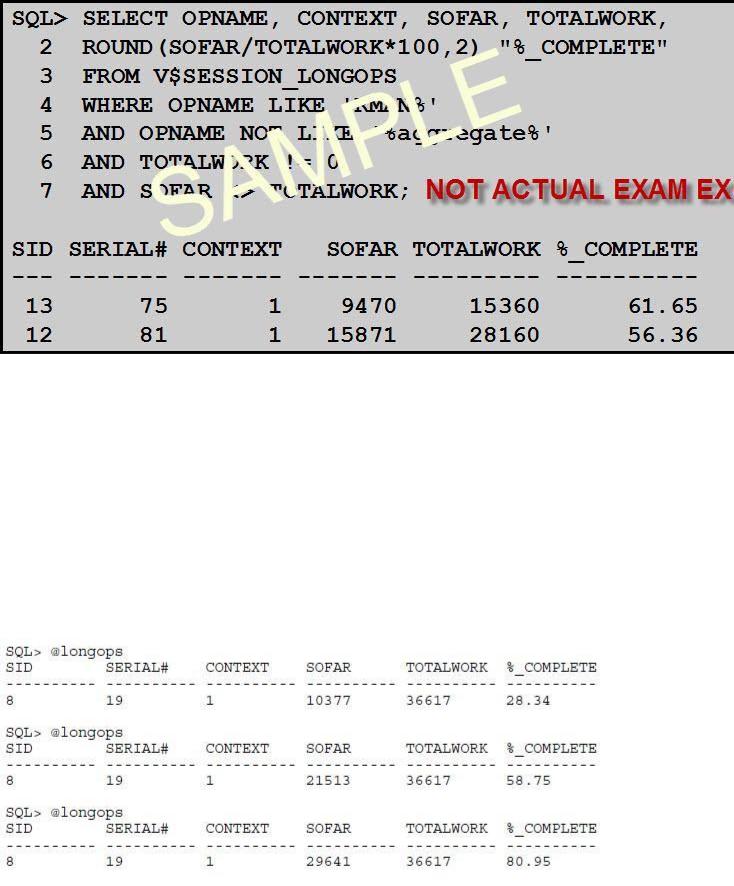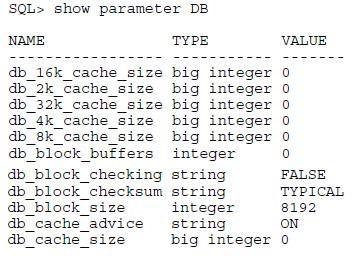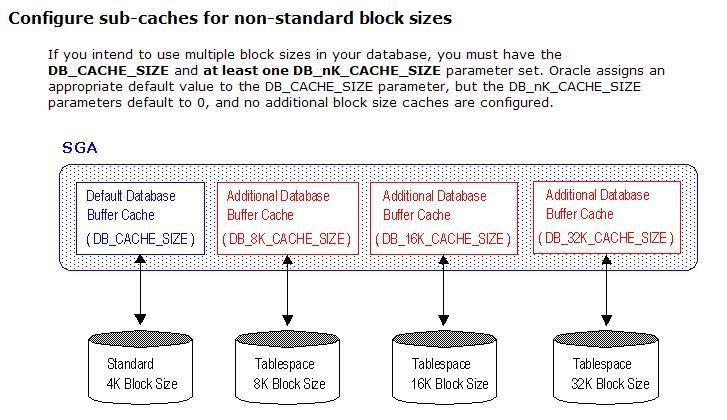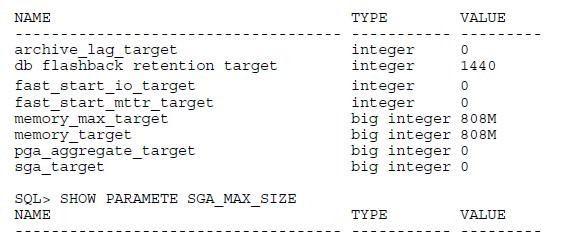
1z0-053.actuatest.9-16-2012
.pdfOracle 1z0-053 Exam
For example, if you restore datafile ?/oradata/trgt/tools01.dbf to its default location, then RMAN restores the file ?/oradata/trgt/tools01.dbf and overwrites any file that it finds with the same filename. If you run a SET NEWNAME command before you restore a file, then RMAN creates a datafile copy with the name that you specify. For example, assume that you run the following commands:
SET NEWNAME FOR DATAFILE '?/oradata/trgt/tools01.dbf' TO '/tmp/tools01.dbf'; RESTORE DATAFILE '?/ oradata/trgt/tools01.dbf';
In this case, RMAN creates a datafile copy of ?/oradata/trgt/tools01.dbf named /tmp/tools01.dbf and records it in the repository.
To change the name for datafile ?/oradata/trgt/tools01.dbf to /tmp/tools01.dbf in the control file, run a SWITCH command so that RMAN considers the restored file as the current database file. For example: SWITCH DATAFILE '/tmp/tools01.dbf' TO DATAFILECOPY '?/oradata/trgt/tools01.dbf'; The SWITCH command is equivalent to the SQL statement ALTER DATABASE RENAME FILE.
QUESTION 630
The database is running in the ARCHIVELOG mode. It has three redo log groups with one member each. One of the redo log groups has become corrupted. You have issued the following command during the recovery of a damaged redo log file:
ALTER DATABASE CLEAR UNARCHIVED LOGFILE GROUP 3;
Which action should you perform immediately after using this command?
A.You should perform a log switch
B.You should make a backup of the database
C.You should switch the database to the NONARCHIVELOG mode
D.You should shut down the database instance and perform a complete database recovery
Answer: B
Section: (none)
Explanation/Reference:
Explanation:
SQL> ALTER DATABASE CLEAR LOGFILE UNARCHIVED GROUP 3;
Immediately back up all datafiles in the database with an operating system utility, so that you have a backup you can use for complete recovery without relying on the cleared log group. For example, enter:
% cp /disk1/oracle/dbs/*.dbf /disk2/backup Oracle 1z0-053 Exam
http://www.oracle-dba-online.com/managing_redo_logfiles.htm This statement clears the corrupted redo logs and avoids archiving them. The cleared redo logs are available for use even though they were not archived. If you clear a log file that is needed for recovery of a backup, then you can no longer recover from that backup. The database writes a message in the alert log describing the backups from which you cannot recover.
QUESTION 631
Which option is best practice for creating a recovery catalog owner in the catalog database?
A.Granting UNLIMITED QUOTA on the SYSTEM tablespace to the owner
B.Allocating the SYSTEM tablespace as the default tablespace and granting the SYSDBA privilege to the user
For More Info Visit www.logicsmeet.com
C.Creating a new tablespace, allocating this as the default, and granting UNLIMITED QUOTA on this tablespace to the user
D.Allocating the SYSAUX tablespace as the default tablespace and granting UNLIMITED QUOTA on this tablespace to the user
Answer: C
Section: Backup, Recovery & Recovery Manager (RMAN)
Explanation/Reference:
Explanation:
Section: Backup, Recovery & Recovery Manager (RMAN)
SQL> CREATE USER vpc1 IDENTIFIED BY password 2 DEFAULT TABLESPACE vpcusers
3 QUOTA UNLIMITED ON vpcusers; http://www.dba-oracle.com/real_application_clusters_rac_grid/recovery_catalog.html The RMAN schema owner is created in the RMAN database using the following steps:
1.Start SQL*Plus and connect as a user with administrator privileges to the database containing the recovery catalog:
CONNECT SYS/oracle@catdb AS SYSDBA
2.Create a user and schema for the recovery catalog. For example, enter:
CREATE USER rman IDENTIFIED BY cat TEMPORARY TABLESPACE temp DEFAULT TABLESPACE tools
QUOTA UNLIMITED ON tools;
3. Grant the recovery_catalog_owner role to the user.
This role provides all of the privileges required to maintain and query the recovery catalog:
SQL> GRANT RECOVERY_CATALOG_OWNER TO rman; Once the owner user is created, the RMAN recovery catalog schema can be added:
Oracle 1z0-053 Exam
1.Connect to the database that contains the catalog owner. For example, using the RMAN user from the above example, enter the following from the operating system command line. The use of the
CATALOG keyword tells Oracle this database contains the repository: % rman CATALOG rman/cat@catdb
2.It is also possible to connect from the RMAN utility prompt: % rman RMAN> CONNECT CATALOG rman/ cat@catdb
3.Now, the CREATE CATALOG command can be run to create the catalog. The creation of the catalog may take several minutes. If the catalog tablespace is this user's default tablespace, the command would look like the following: CREATE CATALOG; Each database that the catalog will track must be registered.
1.Make sure the recovery catalog database is open.
2.Connect RMAN to both the target database and recovery catalog database. For example, with a catalog database of RMANDB and user RMAN, owner of the catalog schema, and the target database, AULT1, which is the database to be backed up, database user SYS would issue: % rman TARGET sys/oracle@ault1 CATALOG rman/cat@rmandb
3.Once connected, if the target database is not mounted, it should be opened or mounted: RMAN> STARTUP; --or-- RMAN> STARTUP MOUNT;
4.If this target database has not been registered, it should be registered in the connected recovery catalog: RMAN> REGISTER DATABASE;
QUESTION 632
Which two statements are true about encrypting RMAN backup? (Choose two.)
A.The transparent encryption of backups uses the encryption wallet
B.The database uses the same encryption key for every encrypted backup
C.The password encryption of backups only uses the password while creating and restoring backup
For More Info Visit www.logicsmeet.com

D.If transparent encryption is configured, you cannot use the SET ENCRYPTION BY PASSWORD command to make password-protected backups.
Answer: AC
Section: (none)
Explanation/Reference:
Explanation: http://www.di.unipi.it/~ghelli/didattica/bdldoc/B19306_01/backup.102/b14191/rcmbackp006. htm A) Transparent Encryption of Backups
This is the default mode and uses the Oracle wallet. A wallet is a password-protected container used to store authentication and signing credentials, including private keys, certificates, and trusted certificates needed by SSL.
C) Password Encryption of Backups Oracle 1z0-053 Exam
This mode uses only password protection. You must provide a password when creating and restoring encrypted backups.
Dual Mode Encryption of Backups
Dual-mode encrypted backups can be restored either transparently or by specifying a password. When restoring a dual-mode encrypted backup, you can use either the Oracle Encryption Wallet or a password for decryption.
QUESTION 633
View the Exhibit and examine the output of the query in different times when the following command runs in an
RMAN sessions: RMAN> BACKUP DATABASE FILESPERSET 2;
The database has seven data files. Why is the %_COMPLETE refreshed to 13.59 in the third output after reaching 88.77?
Exhibit:
For More Info Visit www.logicsmeet.com

A.Because the progress is reported for each data file
B.Because the progress is reported for each backup set
C.Because other RMAN sessions have issued the same BACKUP command
D.Because new data files have been added to the database while the RMAN backup is in progress Oracle 1z0-053 Exam
Answer: B
Section: (none)
Explanation/Reference:
Explanation:
http://download.oracle.com/docs/cd/B19306_01/backup.102/b14191/advmaint.htm#i1008347 While the RMAN job is running, start SQL*Plus and connect to the target database, and execute the longops script to check the progress of the RMAN job. If you repeat the query while the RMAN job progresses, then you see output such as the following:
For More Info Visit www.logicsmeet.com

If you run the longops script at intervals of two minutes or more and the %_COMPLETE column does not increase, then RMAN is encountering a problem. Refer to "Monitoring RMAN Interaction with the Media Manager" on page 23-8 to obtain more information. If you frequently monitor the execution of long-running tasks, then you could create a shell script or batch file under your host operating system that runs SQL*Plus to execute this query repeatedly.
QUESTION 634
Note the following parameter settings:
Oracle 1z0-053 Exam
Which setting is NOT allowed?
A.ALTER SYSTEM SET DB_CACHE_SIZE=50M;
B.ALTER SYSTEM SET DB_8K_CACHE_SIZE=10M;
C.ALTER SYSTEM SET DB_4K_CACHE_SIZE=10M;
D.ALTER SYSTEM SET DB_16K_CACHE_SIZE=10M;
Answer: B
Section: Initialization, Parameters, File Location & Server Configuration
Explanation/Reference:
Explanation:
Section: Initialization, Parameters, File Location & Server Configuration
http://www.akadia.com/services/ora_asm_multiple_block_sizes.html db_block_size integer 8192 - is the db default so you can't have 8K subcache.
For More Info Visit www.logicsmeet.com

Oracle 1z0-053 Exam
QUESTION 635
Which three statements must be true before transporting a tablespace from a database on one platform to a database on another platform? (Choose three.)
A.Both source and target database must be the same character set
B.Both source and target database must have the same endian format
C.The COMPATIBLE parameter must be the same in the source and target databases.
D.The minimum compatibility level for both the source and target database must be 10.0.0.
E.All read-only and offline data files that belong to the tablespace to be transported must be platform aware.
Answer: ABD
Section: (none)
Explanation/Reference:
Explanation: http://download.oracle.com/docs/cd/B28359_01/server.111/b28310/tspaces013.htm#ADMIN01101 Limitations on Transportable Tablespace Use
The source and target database must use the same character set and national character set. You cannot transport a tablespace to a target database in which a tablespace with the same name already exists. However, you can rename either the tablespace to be transported or the destination tablespace before the transport operation. Objects with underlying objects (such as materialized views) or contained objects (such as partitioned tables) are not transportable unless all of the underlying or contained objects are in the tablespace set. Encrypted tablespaces have the following the limitations: Before transporting an encrypted tablespace, you must copy the Oracle wallet manually to the destination database, unless the master encryption key is stored in a Hardware Security Module (HSM) device instead of an Oracle wallet. When copying the wallet, the
For More Info Visit www.logicsmeet.com

wallet password remains the same in the destination database. However, it is recommended that you change the password on the destination database so that each database has its own wallet password. See Oracle Database Advanced Security Administrator's Guide for information about HSM devices, about determining the location of the Oracle wallet, and about changing the wallet password with Oracle Wallet Manager. You cannot transport an encrypted tablespace to a database that already has an Oracle wallet for transparent data encryption. In this case, you must use Oracle Data Pump to export the tablespace's schema objects and then import them to the destination database. You can optionally take advantage of Oracle Data Pump features that enable you to maintain encryption for the data while it is being exported and imported. See Oracle Database Utilities for more information. You cannot transport an encrypted tablespace to a platform with different endianness. Tablespaces that do not use block encryption but that contain tables with encrypted columns cannot be transported. You must use Oracle Data Pump to export and import the tablespace's schema objects. You can take advantage of Oracle Data Pump features that enable you to maintain encryption for the data while it is Oracle 1z0-053 Exam
being exported and imported. See Oracle Database Utilities for more information. Beginning with Oracle Database 10g Release 2, you can transport tablespaces that contain XMLTypes. Beginning with Oracle Database 11g Release 1, you must use only Data Pump to export and import the tablespace metadata for tablespaces that contain XMLTypes. The following table shows the minimum compatibility requirements of the source and target tablespace in various scenarios. The source and target database need not have the same compatibility setting.
QUESTION 636
Your database instance is running. You are not able to access Oracle Enterprise Manager Database Control because the listener is not started.
Which tool or utility would you use to start the listener?
A.Oracle Net Manager
B.Listener Control utility
C.Database Configuration Assistant
D.Oracle Net Configuration Assistant
Answer: B
Section: (none)
Explanation/Reference:
Explanation:
http://download.oracle.com/docs/cd/A97630_01/network.920/a96581/lsnrctl.htm Listener Control Utility: The Listener Control utility enables you to configure listeners to receive client connections. You can access the utility through Enterprise Manager or as a standalone command-line application.
For More Info Visit www.logicsmeet.com
QUESTION 637
Oracle 1z0-053 Exam
While Monitoring the space usage in your database that is in ARCHIVELOG mode you observed that the flash recovery area does not have enough free space to accommodate any more files and you do not have necessary permissions to add more space to it.
Identify the two events that can occur in the event of a log switch? (Choose two.)
A.An entry is created in the alert log file and the database instance continues to function normally
B.The log switch hangs occur for transactions until free space is available in the flash recovery area
C.The Oracle database server deletes a file that is on the obsolete file list to make free space in the flash recovery area
D.The database instance status is implicitly changed to RESTRICTED mode and file creations to the flash recovery area are prevented
Answer: BC
Section: (none)
Explanation/Reference:
Explanation:
https://netfiles.uiuc.edu/jstrode/www/oraelmt/redo_log_files.html Log Switch:
A log switch occurs when the database stops writing to one online redo log file and begins writing to another. Normally, a switch occurs when the current online redo log file is full and writing must continue. However, you can configure log switches to occur at regular intervals, regardless of whether the current online redo log file is filled, and force log switches manually.
Incremental checkpoints:
An incremental checkpoint is a type of thread checkpoint partly intended to avoid writing large numbers of blocks at online redo log switches. DBWn checks at least every three seconds to determine whether it has work to do. When DBWn writes dirty buffers, it advances the checkpoint position, causing CKPT to write the checkpoint position to the control file, but not to the data file headers.
QUESTION 638
Identify the persistent configuration setting for the target database that can be set for the backup by using RMAN. (Choose all that apply.)
A.Backup retention policy
B.Default backup device type
C.Default destinations for backups
D.Multiple backup device types for single backup
E.Default section size for backups
Answer: ABC
Section: (none)
Explanation/Reference:
Oracle 1z0-053 Exam
Explanation:
QUESTION 639
Which three statements are true about windows? (Choose three.)
For More Info Visit www.logicsmeet.com
A.Only one window can be open at any given time
B.Consumer groups are associated with windows
C.Windows work with job classes to control resource allocation
D.The database service name must be provided during windows creation
E.Windows can automatically start job or change resource allocation among jobs for various time periods.
Answer: ACE
Section: (none)
Explanation/Reference:
Explanation:
QUESTION 640
Which three statements are true about persistent configuration? (Choose three.)
A.A user cannot set privileges on the persistent lightweight jobs
B.Persistent lightweight jobs generate a large amount of metadata
C.It is possible to create fully self-contained persistent lightweight jobs
D.The use of a template is mandatory to create persistent lightweight jobs
E.Persistent lightweight jobs are useful when users need to create a large number of jobs in a short time
Answer: ADE
Section: (none)
Explanation/Reference:
Explanation:
QUESTION 641
You want to enable automatic PGA memory management in your database. Which setting is required to achieve this?
A.Set MEMORY_TARGET to zero
B.Set the STATISTICS_LEVEL parameter to BASIC
C.Set the WORKAREA_SIZE_POLICY parameter to MANUAL
D.Set the PGA_AGGREGATE_TARGET parameter to nonzero value
Answer: D
Section: (none)
Explanation/Reference:
Explanation:
Oracle 1z0-053 Exam
Automatic PGA Memory Management:
When automatic memory management is disabled and PGA_AGGREGATE_TARGET is set to a nonzero value, the database uses automatic PGA memory management. In this mode, the PGA_AGGREGATE_TARGET specifies a target size for the instance PGA. The database then tunes the size of the instance PGA to this target and dynamically tunes the sizes of individual PGAs. If you do not explicitly set a target size, then the database automatically configures a reasonable default.
For More Info Visit www.logicsmeet.com

QUESTION 642
Examine the parameter setting in your database:
Which statement is correct about the database?
A.Automatic memory management is disabled because PGA_AGGREGATE_TARGET and SGA_TARGET are not set
B.The instance is started but the database will not be opened until PGA_AGGREGATE_TARGET and SGA_TARGET are set
C.The database is opened but users cannot perform transactions until PGA_AGGREGATE_TARGET and SGA_TARGET are set
D.Automatic memory management is enabled and, as per policy, 60% of the memory for System Global Area (SGA) and 40% of the memory for Program Global Area (PGA) will be distributed at startup
Answer: D
Section: (none)
Explanation/Reference:
Explanation:
Not sure about the policy stuff, but it's the default behavior when memory_target and memory_max_target are Oracle 1z0-053 Exam
set, sga_max_target is always set automatically to the same value as memory_max_target http://download. oracle.com/docs/cd/B14117_01/server.101/b10752/memory.htm#47750 Configuring Automatic PGA Memory When configuring a brand new instance, it is hard to know precisely the appropriate setting for PGA_AGGREGATE_TARGET. You can determine this setting in three stages: Make a first estimate for PGA_AGGREGATE_TARGET, based on a rule of thumb. By default, Oracle uses 20% of the SGA size. However, this initial setting may be too low for a large DSS system. Run a representative workload on the instance and monitor performance, using PGA statistics collected by Oracle, to see whether the maximum PGA size is under-configured or overconfigured. Tune PGA_AGGREGATE_TARGET, using Oracle PGA advice statistics.
QUESTION 643
Which three functions are performed by the SQL Tuning Advisor? (Choose three.)
A. Building the SQL profile
For More Info Visit www.logicsmeet.com
